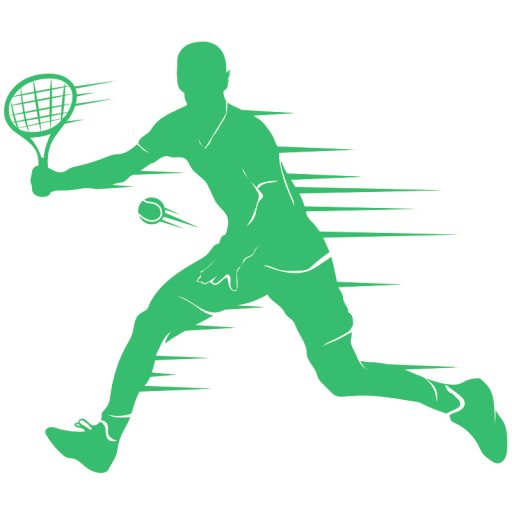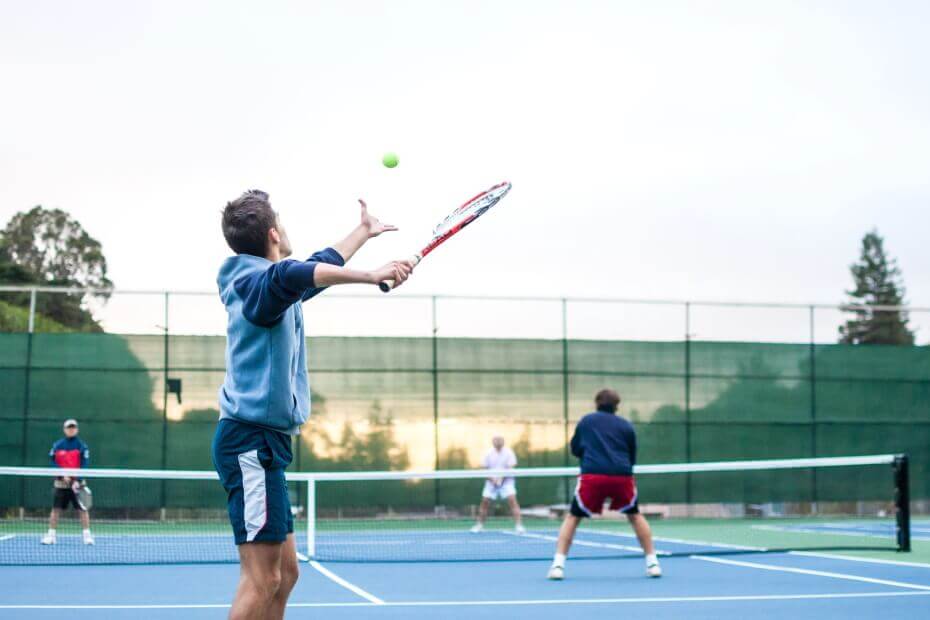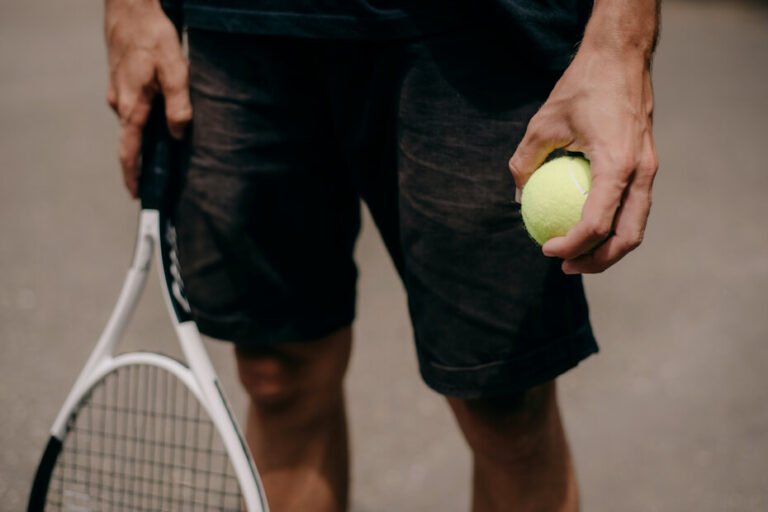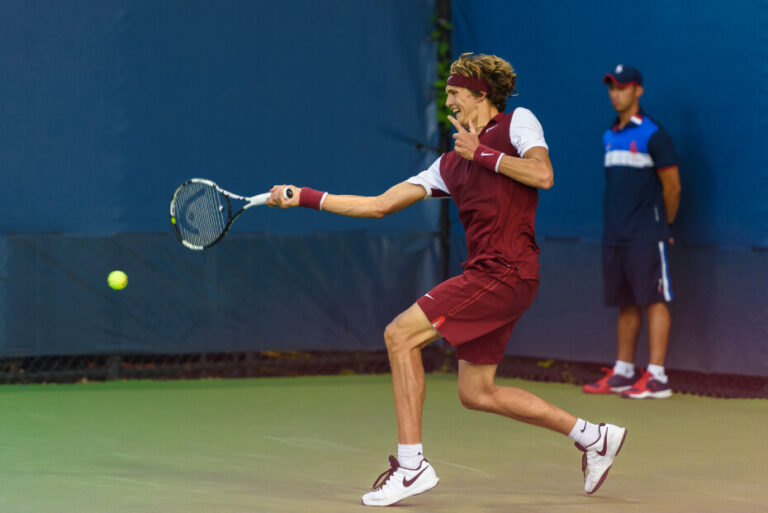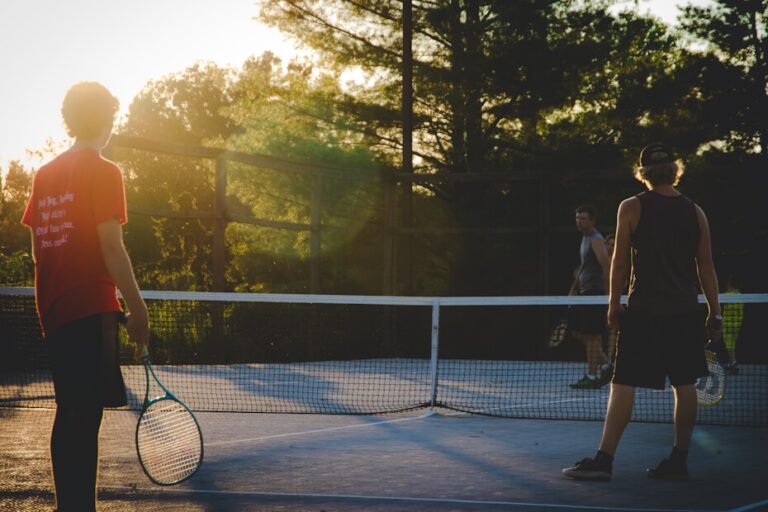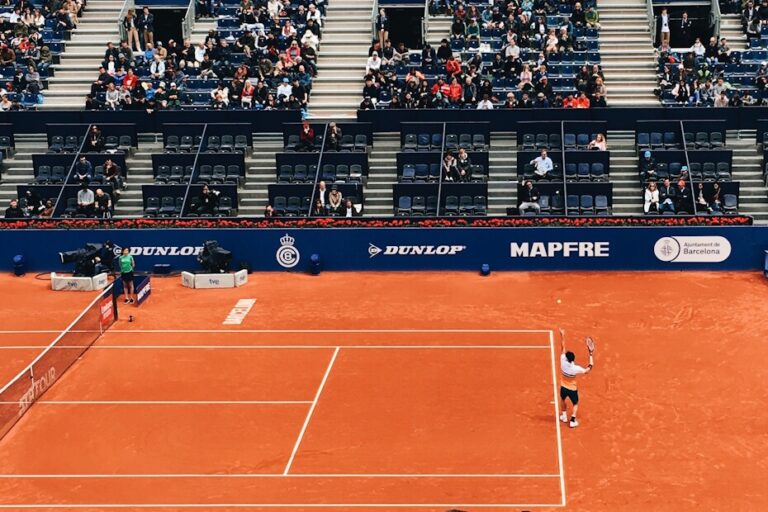Although arguably the most popular tennis matches have been contested as singles bouts, it has to be said that there is an enormous market for doubles tennis, evident in the fact that doubles tennis is still a huge draw to this very day.
Now, the more casual tennis viewers will be forgiven for assuming that a game of doubles tennis is exactly the same as singles tennis, with the same rules and regulations, other than the fact that there are four players on the court at once, rather than two. The truth of the matter, however, is that doubles tennis requires very different strategies to singles tennis, as players need to re-think their gameplans entirely.
If you’re familiar with singles tennis but fancy your chances at doubles tennis, or even if you simply want to learn a new iteration of tennis in general, learning the rules and strategies required for doubles tennis is vital. To help you along, here is a complete guide on how to play doubles tennis.
What Is a Doubles Match in Tennis?
Even though doubles tennis is very popular, not everybody is as familiar with the concept of doubles as they are with singles tennis. If this applies to you, hopefully, this upcoming section will clear things up.
If you were taking part in a match of doubles tennis, you and a partner would play against a team made up of two players on the opposite side of the tennis court. You would also utilize the entire court between the baseline and the doubles sidelines. Basically, the wider court is used for doubles as opposed to singles tennis.
The team that is serving first will begin the match with one player serving, with either member of the opposing team is permitted to receive the ball on the deuce (right) court, with the partner receiving all serves on the ad (left) court.
The server must serve one whole game. This means that for the next game, a member of the opposing team will serve, your partner will serve for the third game, and the other member of the opposition will serve for the fourth game before everything resets and repeats itself for the fifth game.
For the entirety of a set, the serving order must remain the same. However, at the start of each set, the serving order can be changed, just as the receiving order can be.
When your team is due to receive you get to decide which player receives the ball first. This remains the same for the entire set. For the next set though, you and your partner can switch sides.
If the server’s partner is hit with the ball during the serve, a fault will be called by the official. If the server’s opponent or their partner is hit with the ball before it bounces, the server wins the point for their team, so it is almost like a game of dodgeball, except, you know, played in tennis.
For all shots apart from the serve, either member of a doubles team can hit the ball in whatever order they like.
In pro doubles tennis, the no-ad rule is often utilized, which basically means at deuce, it becomes sudden death. This means that the next team that wins a point, wins the game.
Effective Doubles Tennis Strategies
Now that you’ve been brought up to speed with the basic rules of doubles tennis, the fun can begin. Now we can help you and your partner become the greatest doubles tennis team that ever lived. Okay, we might not be able to guarantee that, but we can guarantee that these effective doubles tennis strategies will certainly come in useful the next time you play a game of doubles.
1. Aim for the Middle of the Court
Obviously, we’re not saying that you should aim to hit the ball down the middle of the court each and every single time you play a game of doubles, but at the same time, shots played down the center can be incredibly difficult for your opponents to deal with.
If you want to confuse your opponents, a center-struck shot is a great way to do that. What often happens is that, as the ball will be played between your two opponents, they will hesitate for a split second as they won’t be sure which player should go first. That split second could be enough to win you a point.
Even if they reach it in time, the time they spent chasing the ball will give you and your partner an extra second or two to close in on the net in preparation for their return shot.
2. Communicate With Your Partner
As you can see from the previous tip we just shared with you, when it comes to doubles tennis, communication is extremely important.
During a game of doubles, make sure you speak to your partner to let them know which shots you intend on playing, which ones you are chasing, which ones you will leave for them, and so on. Both you and your partner need to be on the same wavelength to ensure you maximize your chances of victory.
As well as communicating about the game in general, make sure you offer your partner praise, encouragement, and positive feedback. If they miss a shot, don’t grow frustrated with them as this will hinder your team’s morale, plus it will put them under an increasing amount of pressure.
Remember, you are a team, so don’t try to give your partner orders, or assign them a role of seniority. You’re in this together which means you share the responsibility equally.
3. Work on Your Lobs
Dealing with a lob during a singles bout of tennis is hard enough, but dealing with a lob during a game of doubles? That’s even harder still.
A lob, especially when returning a serve, will alter the ball’s velocity, speed, and trajectory. If you’re hitting a return, nailing a lob will buy you and your partner time to get into position for the next shot, and who knows, you might even catch your opponents unaware. At the very least, they’ll be forced to play more defensively.
4. Aim for Your Opponent’s Feet
Another useful tip for winning a doubles tennis match much quicker than anticipated is to aim at the feet of the opposing team.
If the member of your team positioned closest to the net (the net player) hits a volley, the best course of action here is for them to try to aim it at the feet of your opponents. Low volleys are very difficult to deal with and the closer you are positioned to the net, the more power you can put on a shot and the lower you can hit it.
If you hit their feet, then that’s a point in the bag for your team. Even if they hit it, however, they’ll likely have to get under it and hit it high into the air with a defensive shot, which you or your partner will gladly receive and put away for another point.
5. Play Close to the Net
We keep talking about drawing your opponents to the net when playing a game of doubles tennis, but there is a very good reason for that.
In doubles tennis, one of your main objectives is to attempt to get both members of a team positioned as close to the net at the same time as you possibly can. Having two players at the net gives you a huge advantage. This is mainly because volleys will move much faster, resulting in less space to move around your team.
This strategy will force your opponents to play a much more defensive game and in tennis, the offense is generally considered more beneficial than defense.
6. Play to Your Strengths
No tennis player is perfect, not the Williams Sisters, not Roger Federer, and not even Novak Djokovic. All tennis players have strengths and weaknesses, which is why tennis doubles can be so useful.
If for example, your forehand is much more impressive than your backhand, you can decide to receive the ball from the ad court (if you’re right-handed).
When it’s your turn to serve, you can still get the opportunity to play more forehands. In this instance, when serving from the ad court, stand as close to the center mark as you can and then immediately navigate over to the right to the deuce court after you’ve made the serve. Your partner will already be on your left and in a position to cover the ad court for you.
You and your partner should know each other’s strengths and weaknesses, so use this knowledge to your advantage (no bad pun intended).
